What is happening in Xinjiang is deeply concerning and abhorrent. Trying to change it, however, is difficult. Sheena Chestnut Greitens, Myunghee Lee, and Emir Yazici write that any attempt to do so requires a full and clear understanding of the threat perceptions that are driving China’s behavior in the region, particularly this most recent strategy of intensified collective repression. This piece originally appeared on Lawfare.
The Chinese Communist Party (CCP) crackdown on Uighur and other Muslim minorities in the Xinjiang Uighur Autonomous Region (XUAR) has attracted intense scrutiny and polarized the international community. At least 1 million people, maybe as many as 1.5 million, have been detained in a large network of recently constructed camps, where they undergo forced reeducation and political indoctrination.
These developments have shaped not only Chinese domestic politics but also international politics and debate. Chinese authorities have put pressure on Uighur diaspora networks, increasing surveillance and pressuring other countries in which Uighurs live to repatriate them to China. Beijing has also attempted to build an international coalition in support of its policies: When 22 countries sent a letter to the U.N. Human Rights Council asking China to stop its involuntary internments in Xinjiang, that letter was countered by another letter from 37 countries defending the government’s “counter-terrorism, deradicalization and vocational training policies.” The issue has also fueled U.S.-China tension and resulted in U.S. sanctions against Chinese individuals and companies.
What is happening in Xinjiang is deeply concerning and abhorrent. Trying to change it, however, is difficult. Any attempt to do so requires a full and clear understanding of the threat perceptions that are driving China’s behavior in the region, particularly this most recent strategy of intensified collective repression.
Understanding China’s Repressive Strategy in Xinjiang
CCP policy in Xinjiang escalated sharply in spring 2017, after XUAR Party Secretary Chen Quanguo returned from a large, publicly reported Central National Security Commission symposium in Beijing. The timing of this escalation is puzzling, given that public security officials had been saying for some time that their strategy was working and that there had been less reported violence involving Uighurs in Xinjiang, or anywhere in China, in the period just before the CCP changed strategies.
A number of domestic factors have contributed to China’s long-standing security buildup and repression in Xinjiang: political violence and contention involving the region’s Uighur population; the CCP’s turn toward more assimilationist “second-generation” minority policies under President Xi Jinping; and the personal leadership of XUAR Party Secretary Chen. The increase in repression that took place in early 2017, however, was also motivated by China’s external insecurities — most notably, the belief that the CCP had to act to prevent terrorist networks from diffusing back into Xinjiang from abroad.
Two intersecting trends contributed to that heightened insecurity. First, the CCP noted with concern a handful of contacts between Uighurs and Islamic militant organizations in Southeast Asia and the Middle East in 2014-2016 — including arrests in the Philippines, Malaysia and Indonesia, as well as up to 5,000 Uighurs fighting alongside various militant groups in the Middle East (numerical estimates of Uighur participation over the past five years have varied widely). Objectively, the capabilities of Uighur groups abroad, and their actual connection to incidents of violence in Xinjiang, are questionable. Western experts are skeptical, and even the most generous estimates of Uighur militant capability do not imply that insurgency inside Xinjiang is present, or even imminent. Moreover, the contacts that occurred in 2014-2016 were limited to a dozen or so individual cases. Nevertheless, these contacts shifted the possibility of cooperation between Uighurs and Islamic militant groups in Southeast Asia and the Middle East from wholly theoretical to an emerging operational possibility. In 2015 and 2016, leaders of militant groups in the Middle East, including some affiliated with al-Qaeda and the Islamic State, also made statements indicating a desire to target China.
These developments appear to have gotten the CCP’s attention. Leaked documents published in November 2019 by the New York Times quote President Xi as saying, “East Turkestan’s terrorists who have received real-war training in Syria and Afghanistan could at any time launch terrorist attacks in Xinjiang.” Thus even if the Chinese party-state uses the rhetoric of terrorism to deflect or reduce international pressure and justify repressive actions (which we believe they do), internal documents appear to confirm that senior party leaders, including Xi himself, do fear terrorist threats from abroad destabilizing their rule at home.
The other trend that contributed to the CCP’s strategy shift was a change in how the party assesses the nature of domestic threats to regime stability. In 2014, Xi promulgated a new “comprehensive security” framework, which warned that events abroad could threaten stability at home and called for heightened vigilance. Working under this framework, party officials focused on Xinjiang concluded that a much larger percentage of the population was vulnerable to jihadist infiltration than previously estimated. They compared it to a virus: Even people who showed no sign of radicalism could be “infected” by an extremist virus unless they were properly “inoculated.”
Together, these two developments reshaped how China conceived of counterterrorism and its associated domestic security policies. Globally, China increased its counterterrorism activities abroad, including visits by military delegations to the Middle East and regional counterterrorism cooperation with Southeast Asian countries. The CCP also focused on targeting diaspora networks to cut off a vector by which terrorist threats could reenter China; meanwhile, they proposed, detention and reeducation should make the population psychologically and politically resilient to jihadist infiltration.
As a result, the CCP is imprisoning and involuntarily reeducating huge numbers of people who have shown no inclination toward anything other than normal Uighur cultural or Muslim religious practice, on the basis of threat perceptions that may or may not be accurate. (Nondemocracies often get threat assessments wrong, because they have trouble obtaining good information to begin with.) The very metaphor of vaccination, ironically, makes that clear: People who are demonstrably “symptom free” are nevertheless being swept up in detention and reeducation on a massive, intensive scale.
China’s policy of “preventive repression” in a counterterrorism context took a threat that was likely at a very low level to begin with and sought to ensure that it would never materialize into anything more significant. The consequences of this approach have reverberated inside China and around the world.
Implications for Current Policy
U.S. policy with respect to Xinjiang should balance two principles: acknowledging that there is some genuine concern about terrorism on Beijing’s part, and pushing back on the use of that concern to justify indiscriminate repression and collective punishment. These principles are not contradictory, but combining them will require careful action on the part of U.S. and international policymakers.
Engaging with the CCP’s perceptions of the terrorist threat does not mean uncritically accepting how the CCP has chosen to respond. Nor does it suggest — as a recent Foreign Affairs piece argued — that the United States should provide domestic security assistance to China to help it fight terrorist threats “without resorting to repression.” For both moral and practical reasons, that would be unwise: The United States would be taking on some responsibility for China’s domestic security behavior without the ability to control, or even have full knowledge of, what is being done in America’s name.
U.S. rhetoric and policy can and should focus on the huge number of innocent people who are caught up in China’s counterterrorism dragnet. It is vital that policymakers communicate to the people who have suffered from these policies, and their loved ones in China and abroad, that the United States and the international community see that the CCP’s policies are targeting and punishing innocent people who are not “terrorists” in any reasonable definition of the word. And it is vital that the international community continue to find ways to apply pressure to China over the human rights consequences of its current approach, as well as limit its attempts to alter current international human rights norms in a direction favorable to Beijing.
At the same time, American policymakers and other advocates have, over the past year, shifted toward a simplistic “it’s not counterterrorism” argument that dismisses CCP insecurities out of hand. Arguing over whether what is happening in Xinjiang is counterterrorism may not be helpful, especially when it appears that the CCP in fact perceives it (at least partly) that way. The United States might not have a great shot at persuading the CCP to change course by engaging on a counterterrorism basis, but the chances of success are probably greater than if the issue is framed solely as a matter of human rights.
Moreover, even if the CCP’s emphasis on counterterrorism is largely instrumental, there are risks to the current approach. Dismissing China’s assertion of security concerns sets up the CCP to dig in and display graphic images of violence to prove that it faces a real threat. If the CCP’s presentation is convincing to (non-Uighur) domestic audiences in China and/or to audiences in other countries, U.S. dismissals could backfire. This approach also risks reinforcing narratives that Uighurs are dangerous, that Western critics are either naive or don’t take threats to Chinese lives as seriously as they take threats to their own, and that the CCP has an obligation to ensure safety and stability that Western critics are dismissing unfairly. None of these is a helpful narrative for U.S. foreign policy, or for the key objective of minimizing human rights violations in Xinjiang.
One alternative is for the United States and other democracies to collectively say that terrorist threats, no matter how real the CCP perceives them to be, are not a blank check for massive human rights violations. That way, the U.S. — and European democratic counterparts, whose actions on Xinjiang have thus far been more limited than those of the United States — could continue to pressure China on the human rights violations emerging from Xinjiang but do so without getting bogged down in an unhelpful “is it counterterrorism” debate.
Moreover, these countries could stress that indiscriminate repression and false positives in the use of police violence commonly backfire — meaning that even if all the CCP cares about is regime preservation, the strategy it has adopted in Xinjiang is an incredibly risky one. Uighurs who have been targeted after living their lives as “model citizens” may conclude that if they’re going to be repressed anyway, they might as well challenge the CCP.
This kind of approach may be particularly important for countries that must now choose whether and how they take a stance, and what, concretely, they are going to do about the opposing stances taken by the United States and China on this issue. Acknowledging that there are some counterterrorism issues at stake would allow countries that are concerned about counterterrorism and seek to be respectful of human rights to align clearly with the United States, weakening international support for and the legitimacy of China’s preferred approach. It would allow the United States to emphasize more credibly that China’s linking of international terrorism with policies of domestic repression poses an unnecessary conundrum for countries that seek genuine collaboration with China to reduce common terrorist threats. Mass internment of Chinese Muslims makes it harder, not easier, for many countries — including both democracies and countries with sizeable Muslim populations — to justify and craft law enforcement and counterterrorism cooperation with China. Turkey’s recent criticism of China’s Uighur policy, which it called “a great embarrassment for humanity,” provides one example of this dynamic.
However, if cutting off counterterrorism cooperation with China increases other countries’ own terrorism risk at home, then these countries will face significant and potentially difficult trade-offs. (Countries that conduct significant counterterrorism cooperation with China were notably mostly absent from either U.N. letter adopting a public stance on Xinjiang.) To be sure, the United States is unlikely to convince every country that cooperates with China on counterterrorism to dramatically change its approach — especially since some of those countries are well known for their own human rights violations — but at least the United States would be on the record as trying to offer realistic alternatives.
Using these principles could constructively address the problem of foreign fighters from Xinjiang in Syria and the broader Middle East. This is not a China-specific challenge but a global one — as yet, however, there is not a common democratic or international proposal for how to resolve it. If the United States and other democracies don’t create a solution, then China will likely work bilaterally with countries to simply repatriate its own nationals for punishment and reeducation — creating additional human rights violations while also leaving the broader global issue unsolved.
Rather than ceding to China’s initiative on this issue, the United States and its partners should lead the way on creating an international solution that addresses valid security concerns among the countries that foreign fighters have come from but that is also fully compatible with human rights — meaning that it does not rest on repatriating individuals to countries where they will likely be persecuted or executed without trial. And by addressing the origin of what China claims is its principal security concern, the United States and the international community would remove one of the CCP’s primary internal and external justifications for its current policies, making them harder to defend at home and abroad.
In sum, the United States and the international community can and should keep the focus on China’s massive human rights violations in Xinjiang. To do this effectively, however, they must engage — carefully, strategically and wisely — with China’s counterterrorism arguments.
The Brookings Institution is committed to quality, independence, and impact.
We are supported by a diverse array of funders. In line with our values and policies, each Brookings publication represents the sole views of its author(s).

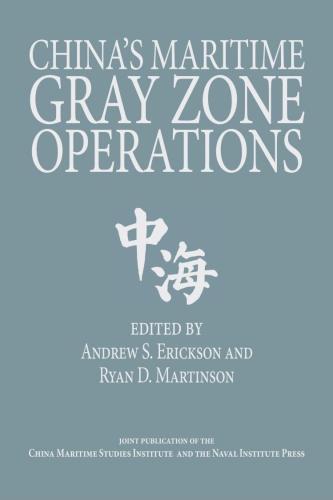
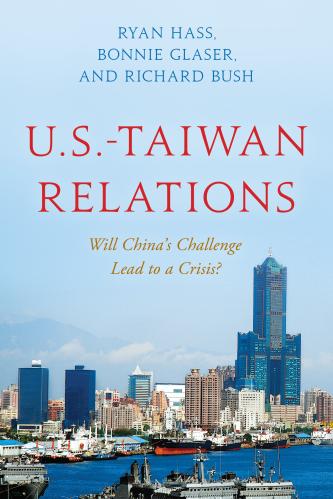

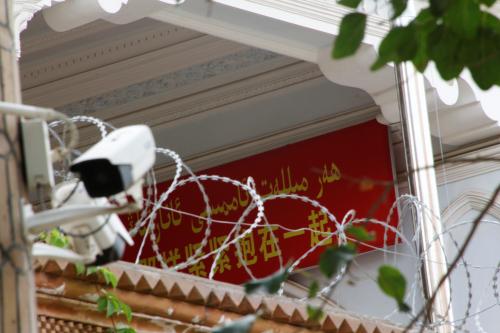
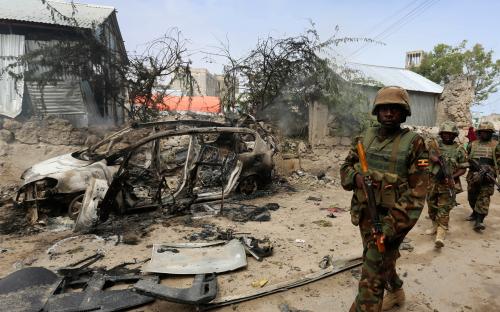
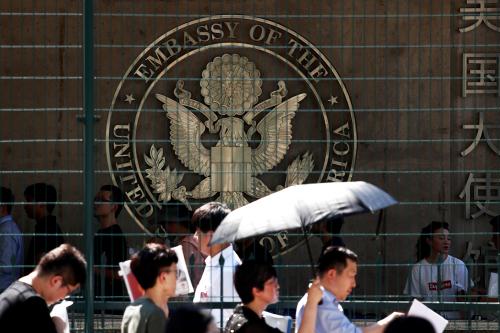

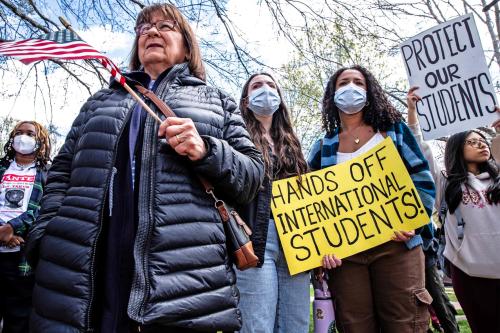
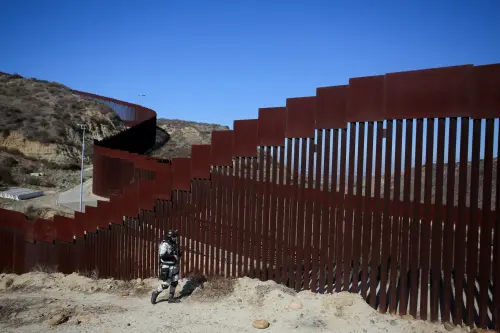
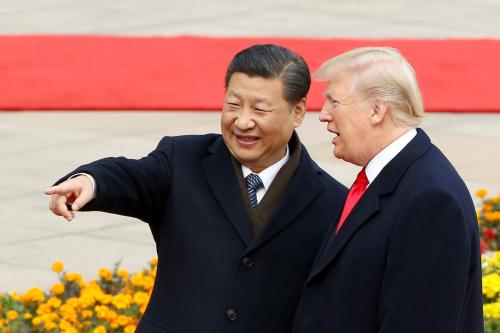
Commentary
Understanding China’s ‘preventive repression’ in Xinjiang
March 4, 2020